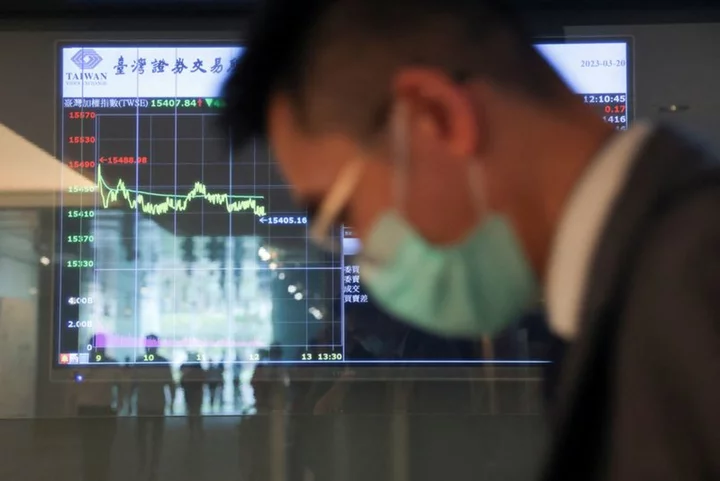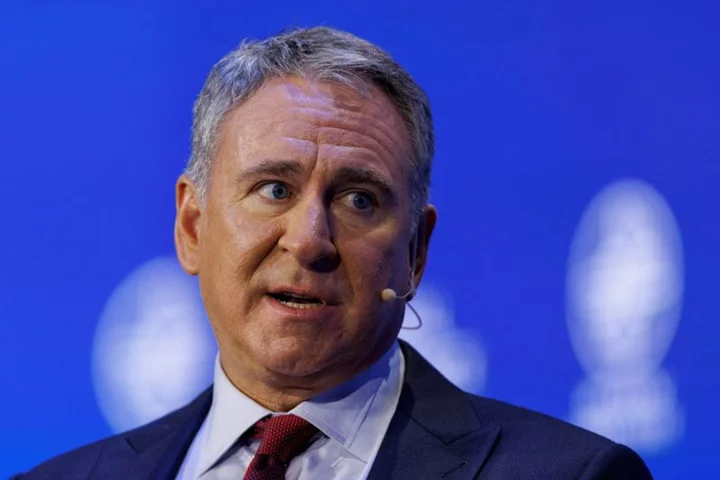WASHINGTON (AP) — Surging interest rates are intensifying the challenges for the U.S. economy and threatening to derail the Federal Reserve’s drive to tame inflation without causing a deep recession.
Since mid-summer, the yield on the 10-year Treasury note, a benchmark for many loans, has steadily climbed, causing a spillover rise in other borrowing costs. The costs of mortgages, auto loans and credit card debt have all risen in response. The collective impact of higher rates across the economy could also weaken the government's own finances.
The jump in longer-term rates coincides with other threats, from higher gas prices and this week's resumption of student loan payments to autoworkers’ ongoing strike and the risk of a government shutdown next month, all of which could leave consumers with less money to spend to power the economy.
The strike by the United Auto Workers, now in its third week with no resolution in sight, could reduce vehicle sales in coming months. And the threat of a government shutdown, narrowly averted this past weekend, looms large, especially given the chaos over the leadership of the House of Representatives. Far-right Republican House members deposed their leader, Rep. Kevin McCarthy, on Tuesday for working with Democrats to temporarily avoid a shutdown.
The economy is coming off a robust summer, fueled by strong consumer spending on travel, concert tours and movie blockbusters. The economy is estimated to have grown at a healthy 3.5% annual rate in the July-September quarter, according to economists at Goldman Sachs.
Yet growth will likely slow to a meager 0.7% annual rate in the final three months of the year, Goldman estimates. With borrowing rates high and inflation still relatively elevated, consumers, who drive about 70% of economic growth, are expected to spend more cautiously.
On Friday, the government will provide a snapshot of how employers are factoring the turmoil into their hiring plans when it issues the September jobs report. Economists have forecast that it will show that employers added a solid 162,000 jobs last month and that the unemployment rate dipped to 3.7%, near a half-century low, from 3.8%.
But the substantial rise in borrowing costs could intensify the economy's slowdown. The yield on the 10-year Treasury touched a 16-year high of 4.8% on Tuesday, up from 3.3% in April. Last week, the average 30-year fixed rate mortgage hit 7.3%, the highest rate in 23 years, according to mortgage buyer Freddie Mac.
On Tuesday, Loretta Mester, president of the Federal Reserve Bank of Cleveland, said she and other Fed policymakers will have to consider the rise in long-term rates in deciding whether to raise their key rate once more before year's end. Her remarks suggested that the higher borrowing costs might lead the Fed to forgo another hike.
“That will influence not only our policy decisions but how the economy evolves over the next year,” Mester said. “Those tighter, higher rates will have an impact on the economy.”
Financial analysts point to several reasons for the rapid increase in lending rates. To begin with, the Fed has repeatedly underscored that it intends to keep its key rate elevated for much longer than financial markets had expected earlier this year. And the economy's ability to keep growing, even as the Fed has jacked up rates, has lent the impression that it can withstand higher borrowing costs.
The economy's resilience in the face of higher rates could mean that borrowing costs will stay higher than they did after the 2008-2009 financial crisis, which led the Fed to cut its rate to near zero. During that period, the 10-year Treasury yield dropped to as low as 1.5%, and mortgage rates even fell below 3% during the pandemic.
The Treasury Department is now also auctioning off more debt to cover the government's swelling budget deficit, which reached $1.5 trillion this year and is expected to rise further in 2024. The supply of Treasurys is growing even as the Fed is reducing its holding of bonds. Overseas buyers have reduced their purchases, thereby forcing rates higher to attract buyers.
“All of that is driving these fears of higher rates, and no one knows when it’s going to stop,” said Gennadiy Goldberg, head of US rates strategy at TD Securities.
Benson Durham, a former Fed economist who is head of global policy at Piper Sandler, suggested that long-term rates are rising because investors consider it riskier to hold government debt for the long run when the economy appears particularly volatile and uncertain, as it does now.
And Fed officials, Durham noted, have shifted from well-telegraphed rate hikes to a hazier stance. Chair Jerome Powell has repeatedly stressed that the central bank is “data dependent," meaning it will raise rates again only if the latest economic data supports doing so — or forgo a rate hike if inflation falls steadily.
“What they’re really telling us is, ‘We’re all over it like a cheap suit, but we’re not sure what exactly we’re going to do,’ ” Durham said.
In addition to higher rates, student loans are expected to take a noticeable bite out of the economy. Roughly 43 million people will resume paying several hundred dollars a month to the government, which Goldman estimates could cut one-half of a percentage point from annual growth in the October-December quarter. More expensive gas could shave an additional 0.3 percentage point from growth in both the fourth quarter and the first three months of next year, Goldman estimates.
A government shutdown, should it occur next month, would lop another 0.2 percentage point off growth for each week it endures, according to calculations by Nancy Vanden Houten, an economist at Oxford Economics.
“We think the narrative is going to shift quite materially before the end of the year,” said David Page, head of macro research at AXA IM, a London-based investment manager, who expects the economy to actually shrink in the fourth quarter.
Rather than optimism for a “soft landing,” in which inflation is curbed without causing a recession, there will be renewed fears of a downturn, he said.









